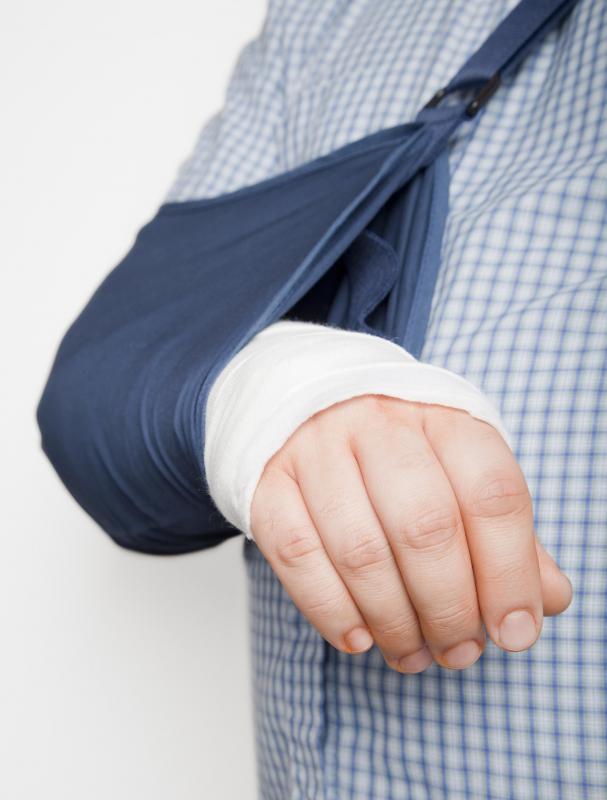At TheHealthBoard, we're committed to delivering accurate, trustworthy information. Our expert-authored content is rigorously fact-checked and sourced from credible authorities. Discover how we uphold the highest standards in providing you with reliable knowledge.
What is a Radial Head Fracture?
A radial head fracture is a fracture which occurs at the radial head, an area of the radius, a bone in the forearm, which makes up part of the elbow. This fracture is also known as an elbow fracture, although in fact elbow fractures can involve several different bones, not necessarily the radius, because the radial head fracture is the most common type of elbow fracture. Treatment options for this type of fracture vary, depending on how severe it is.
Most commonly, people develop a radial head fracture because they put a hand out to break a fall. The impact of the fall travels up the arm to the elbow, breaking the radial head. Fractures of other bones in the elbow can occur at the same time, and the elbow joint may become dislocated as well. Patients usually notice when they have this type of fracture, because their elbows feel hot, swollen, and extremely painful, and their range of motion may be significantly limited.

Radial head fractures are classified as Type I, Type II, or Type III. Type I fractures are the least severe, and they may be treatable with a simple splint or cast. Type II fractures are somewhat more complex, usually requiring surgery to pin the bone for healing, and Type III fractures involve a breakage so severe that multiple pieces of bone are created during the break, and it may be necessary to remove the radial head and replace it with a graft or artificial joint.

A major concern with a radial head fracture is that it can be difficult to identify on an x-ray. A patient may be x-rayed and show no signs, and given minimal treatment, only to return in several weeks, complaining of continuing pain. The later x-ray usually shows more damage to the elbow, caused by nonunion of the broken bone or by healing at a bad angle. For this reason, doctors try to be very careful with the diagnosis of elbow injuries, taking time to determine whether or not a fracture has occurred.
These fractures are seen more commonly in women than men, and tend to be most frequent in people between the ages of 30 and 40. However, a radial head fracture can occur in someone of any age, and as with other types of fracture, the earlier the patient gets treatment, the better the outcome will be. For this reason, people who suspect that they may have an elbow fracture should definitely seek attention from a doctor who can examine the joint for signs of a fracture and provide the appropriate treatment.
AS FEATURED ON:
AS FEATURED ON:












Discuss this Article
Post your comments